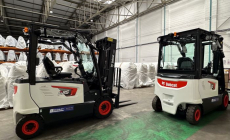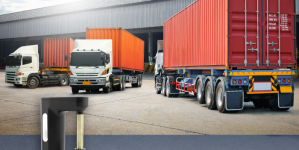-
QUECLINK NAMED LEADING TELEMATICS HARDWARE PROVIDER AFTER YEAR OF GROWTH AND INNOVATION - January 9, 2026
-
Women Leading the Way in the UK Material Handling Industry - December 12, 2025
-
LiftEx 2025 live from Liverpool - December 11, 2025
-
DATA ANALYSIS – THE FOUNDATION OF EVERY PEAK SEASON - December 5, 2025
-
Creative education specialists Creative Hut give 3PL full marks for onboarding excellence - December 5, 2025
-
Unlimited Industries raises $12M to build the AI construction company that will power America’s future - December 4, 2025
-
Scottish Leather Group gets full-support solution from Rushlift - December 4, 2025
-
Etaily lands strategic investment from Japan’s SMBC – bringing total funding to $24M for Social Commerce enablement platform - December 4, 2025
-
Winners lift their LEEA Awards and raise the industry - December 4, 2025
-
Prism eLogistics and Brand Angels Partnership Gives Brands the Full Package - December 3, 2025
Energy Recovery And Storage In Kasto Storage Systems.
Storage systems that save electricity
Rising electricity costs and diminishing resources are creating a demand for energy-efficient solutions in every industry. Logistics and distribution are no exception. For this reason, the sawing and storage specialist KASTO has developed an innovative energy recovery and storage concept for its automatic bar stock and sheet metal storage systems. It makes it possible to convert surplus kinetic energy into electricity and store it temporarily for later use as needed. This cuts operating and investment costs, and it reduces CO2 emissions.
Energy recovery is now available as an option with all KASTO storage systems. The electric circuits for the drive shafts of the operating gantry crane (OGC) are connected through a DC link. Surplus kinetic energy, such as that produced in braking of the OGC or lowering of lifting gear, can be converted into electricity and fed back into the grid. The energy can then be used for other purposes – either within the storage facility or by other users in the company grid. Consumption of electric power can be reduced by as much as 40 percent compared to conventional drive systems.
To achieve even greater efficiency, KASTO is now also optionally equipping its storage systems with an integrated energy storage unit upon request. The unit temporarily stores surplus energy in double-layer capacitors for use as needed. An intelligent controller charges and discharges the energy storage unit depending on the process currently running. The energy remains in the system until it can be used. Power is drawn from the grid at a nearly constant level, allowing peripheral equipment to operate at the rated load. In this way, users can reduce the connected load of the OGC by more than 50 percent. The energy storage allows saving additional costs by avoiding load peaks.
Besides significant reductions in power consumption and CO2 emissions, KASTO’s new technology has the advantage that operators of storage facilities can often use smaller transformer stations. This reduces not only the costs of operation but also investment costs. The purchase will pay for itself in a very short time. Existing KASTO storage systems can also be retrofitted with energy recovery and storage.

































